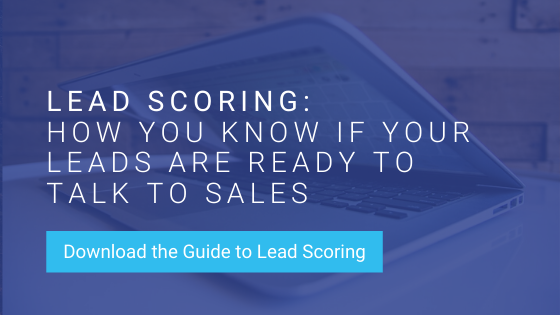Your marketing campaigns are hugely successful, you’re gathering and utilizing tons of valuable data, and pulling in dozens of qualified leads per week. Now what? Someone needs to follow up with all of those leads. Believe it or not, there is just as much science and finesse to the follow up as the marketing itself. Here are a few suggestions to allow your lead follow up to be as successful as your marketing campaigns.
Understand the Difference Between Hot, Warm, and Cold Leads
Not every lead is created equal. Just like each customer is unique, so is each lead that comes in from a prospective customer. Even though you’ll notice trends and may start to feel like you’re having the same conversations over and over again, each situation will have slight variations. An important aspect of telling the difference between leads will be understanding which are hot, warm, and cold.
Looking to increase the quantity and quality of your leads? Read up on Lead Scoring.
Hot lead – Someone who fits the profile of some of your best current customers, has the means to make a purchase, and is ready to do so now or in the very near future.
Warm lead – A prospect who shares some similarities with your ideal customer and has demonstrated interest in your product or solution. These leads may not be quite ready to make a purchase because of timing, budget, or some other factor, but they’re good ones to keep in touch with because your product or solution can actually help them.
Cold lead – This category can include everything from complete spam to someone that is legitimately confused about what your product or service is and doesn’t understand that it won’t solve their issue.
Once you’ve started to identify some trends, it may be a good idea to take a look at some real data and set up a lead scoring system. This is where you deep dive into the details of what specific factors indicate a lead is really ready to buy. Is it that they visited your pricing page or spent 20 minutes on your features site, requested a demo, signed away the rights to their first-born child? OK, probably not that last one. But a good data analyst will be able to find correlations in the data that will help you to set up a scoring system to organize and prioritize which leads to reach out to more urgently. Read about the basics of Lead Scoring, here.
Consider Following Timing and Strategy
Timing is everything when it comes to lead follow up. Research suggests that calling a lead within 5-10 minutes gives you the best shot at connecting with them. Most likely, if a lead really is hot, they’ll be looking to confirm some information or ask a couple of questions. Having the ability to do that within a couple of minutes of providing their information, while it’s top of mind, can help them make their final purchasing decision more quickly.

It’s understandable that it may not be possible to call every single lead that comes in within 5-10 minutes, especially if the leads come in at times when there is no sales coverage like overnight or on the weekends. This is where a little automation could play an important role (see the next section).
The next step after the initial touch will be a strategy for how many times to reach out total and the timing of those attempts. This may take some experimentation and testing to find what works best for your prospective customers. You’ll want to aim for a balance of being persistent and regular enough to get noticed, but not being overbearing or annoying.
Automation vs. Personalization
If you are part of a small company just getting started, you may be able to respond to every lead that comes in. If you have the capacity to do so, you absolutely should. In the beginning, even some of the leads that turn out to be a dead end are going to be educational. They’ll allow you to tweak your messaging and content to make your offerings and solutions more clear from the start.
As you grow, or if you are a part of a company that brings in several leads per day, you may have to use some automation in order to respond in a timely fashion to everyone. You can also use that first response as somewhat of a vetting process. Use tracking software to see who opens the message, who clicks on links within the message, and of course, who replies.
The idea here is to find harmony between the two. If you automate too heavily, chances are you will come across as too canned and as though you don’t actually value your prospective customers enough to give them personal attention. If you personalize too much and spend too much time on each lead, you may lose other leads because you take too long to respond or simply never get to them.
To get started, create a couple of different email templates for the different responses that you find yourself creating often. Personalize each one before you actually send it. You can even utilize software that will pull in a contact’s name, but you should ALWAYS double check that it is correct. Misspelling someone’s name, or worse, calling them [CONTACTNAME] will most likely lose that lead.
Be Creative with Your Lead Follow Up
The truth is we are all in a state of constant information overload with our devices attached to our hips and wrists. Everything we do seems that it requires our email address, and our inboxes have thousands of ignored, unread messages.

In order to be noticed amongst those thousands of messages, you need to figure out how to stand out from all of that noise. One way to add some creativity to your responses is to vary your methods of response.
According to Mobile Marketing Watch, 98% of all text messages are opened compared to 22% of emails. If a phone number is something you receive from a lead, shoot them a well-thought-out text with a simple call-to-action. Some forward-thinking sales and marketing people are also jumping in on the popularity of video and using video introductions to a specific salesperson in their lead follow up.
Offer Value to Your Leads
The most creative, eye-catching headlines, content, and graphics will turn some eyes your way. To keep them, you need to actually offer something valuable once you have that attention. There is no faster way to get someone to never look at your messages again than to send nonsense that was designed just to get a click. [Here are some examples of things you don’t want to do in your follow up process.]
Of all of the recommendations, this is probably the most important. If you aren’t offering immediate value, there will be no reason for a person to continue reading and especially not a reason to consider responding to you.
It’s Not Over After the First Conversation
You’ve had a great conversation, you told your prospective customer all of the ways your products can solve all of their problems and make their lives 10,000% easier. Excellent. That’s one of the hardest battles to make it through. However, you aren’t done there. Your job as a salesperson isn’t done until that person becomes a customer or decides they don’t want what you are offering.

Every single time you communicate with a prospect, there should be some kind of request for them to take a next step or Call-to-Action (CTA). You want the CTA to be something that will ultimately be beneficial to the prospect. Ideally, it’s best if you can ask open-ended questions that require more than a yes or no response to get them thinking and allow you to learn more information.

